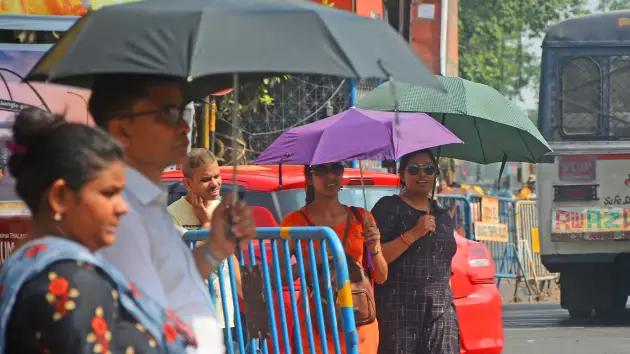Last month was the third-hottest April the country has seen over the past 122 years, from 1901 to 2022, according to government officials, and March was the hottest ever recorded. The heat wave is particularly notable for its early onset and the large geographic region affected. While climate change is expected to make heat waves like this more common, they are often a response to multiple specific factors, including ocean events in the Pacific and Atlantic, and local weather patterns resulting from dry soil because of limited rainfall.

India has been suffering under record-breaking heat for the last couple months.Last month was the third-hottest April the country has seen over the past 122 years, from 1901 to 2022, according to government officials.
The average maximum temperature was 35.30 degrees Celsius (95.5 degrees Fahrenheit), coming in just behind 35.42 degrees Celsius (95.8 degrees Fahrenheit) in 2010 and 35.32 degrees Celsius (95.6 degrees Fahrenheit) in 2016, the Indian government said in a statement on Monday. That’s more than a degree hotter than the average max temperature in April between the years 1981 and 2010, which was 33.94 degrees Celsius (93.1 degrees Fahrenheit).
The average maximum temperature recorded in March was 33.10 degrees Celsius (91.6 degrees Fahrenheit), which is the highest average maximum in the past 122 years, and just a smidge higher than the previous record high recorded in March 2010. It’s almost two degrees hotter than average maximum temperature in March between the years 1981 and 2010, which was 31.24 degrees Celsius (88.2 degrees Fahrenheit).
What’s particularly notable is the early onset of the heat wave, according to Arpita Mondal, a professor of climate studies at the Indian Institute of Technology. The expected timing of a heat wave like this is May and June, Modal told CNBC. It’s also affecting a notably large geographic region, Mondal said.
That said, more research is needed to fully understand the cause of and future implications of this heat wave, according to Mondal. Heat waves are often a response to multiple specific factors, including, for example, ocean events in the Pacific and Atlantic and local weather patterns resulting from dry soil because of limited rainfall, she said.
Northwest and Central India are due for thunderstorms which should being some relief from the record-setting heat wave that has been blanketing much of the country in recent months. Temperatures are expected to drop by several degrees.
Other regions aren’t expected to see much relief in the short term. Gujarat and Maharashtra, in the western part of the country, are expected to have “no significant change” in their maximum temperatures over the next two days and then see their maximum temperatures go up by about 2 degrees Celsius (3.6 degrees Fahrenheit), the Indian meteorological department said on Monday.
Sources:
CNBC
Provided by the IKCEST Disaster Risk Reduction Knowledge Service System
Comment list ( 0 )
